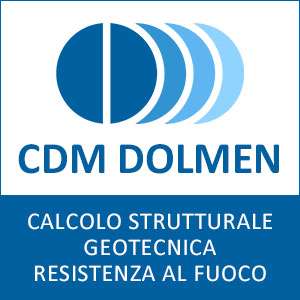Collasso di strutture in acciaio esposte al fuoco: la corretta analisi con la modellazione numerica
Per gli edifici in acciaio, soprattutto quelli non protetti uno degli strumenti utilizzati per verificare la cinematica del crollo a causa di incendio è il metodo degli elementi finiti. Vediamo in cosa consiste.
Analisi collasso strutture in acciaio soggette al fuoco: tecniche e gradi di complessità
Il collasso implosivo, o controllato, è un requisito dell’attuale Codice antincendio italiano per le strutture in classe di prestazione I, come parti di impianti industriali automatizzati o edifici agricoli.
È quindi particolarmente rilevante per gli edifici in acciaio non protetti. Poiché attualmente non esistono criteri e metodologie progettuali affidabili nei codici edilizi o nella letteratura, uno degli strumenti utilizzati per verificare la cinematica del crollo è il metodo degli elementi finiti.
Tuttavia, effettuare un’analisi del collasso con software commerciali significa utilizzare tecniche di modellazione appropriate per simulare le condizioni iniziali e gli eventi che possono portare al collasso o verificarsi durante il cinematismo, come instabilità delle colonne, grandi spostamenti e possibili contatti tra gli elementi.
Il documento fornisce alcune raccomandazioni per condurre correttamente un’analisi di collasso delle strutture in acciaio confrontando diverse tecniche e gradi di complessità delle analisi. Verranno discusse le scelte di modellazione, l’applicazione del carico, la tipologia degli elementi finiti, le non linearità costitutive e geometriche e le procedure di analisi.
Leggi di seguito il testo originale della memoria CTA.
Abstract
Implosive, or controlled, collapse is a requirement of the current Italian Fire Code for structures in performance class I, such as parts of automated industrial plants or agricultural buildings. It is then particularly relevant for unprotected steel buildings. Since there are currently no reliable design criteria and methodologies in building codes or literature, the finite element method is one of the tools used to describe the collapse kinematics.
However, carrying out a collapse analysis with commercial software means using appropriate modeling techniques to simulate the initial conditions and the events that may lead to collapse or occur during the kinematic, such as buckling of columns, large displacements, and contacts between elements.
The paper provides some recommendations for correctly conducting a collapse analysis of steel structures by comparing different techniques and degrees of complexity. Modeling choices, load application, type of finite elements, geometrical and constitutive nonlinearities, and analysis procedures will be discussed.
Introduction
Recently, the approach to the fire design of steel structures moved towards a performance-based approach, as suggested by the results of the Cardington full-scale test [1], where the observed behavior of structural elements was far from the standard furnace tests. This result was partly due to the geometry of actual structures, where primary and secondary elements are interconnected and are part of continuous construction, and partly to the restraint of the cooler part of the structure on the heated and expanded part.
The performance-based approach increased the development of software capable of predicting a structure's response to fire since real-scale tests are costly. Dedicated FE packages were developed at the University of Liege, SAFIR [2], and the University of Sheffield, VULCAN [3], while other researchers use commercial FE software, such as ABAQUS, ANSYS, or STRAND7.
Most analyses found in the literature are based on the software mentioned above and are distinguished by two more hypotheses: implicit scheme and static analysis. These two are limits in a fireinduced collapse analysis. The implicit solution can not handle the numerical singularity that undergoes when the structure starts collapsing. The static analysis can be inadequate in dealing with great strains that can happen in short periods during the kinematic. Such analyses lead to an embryonic collapse state in the best possible way. Then designers or researchers must evaluate the postcritical status by observing deformed shapes or temperatures, negle cting any dynamic interaction during the collapse.
The use of the explicit solution scheme to solve singularity issues has been proposed recently: Sun et al. [4] proposed a method based on two steps: implicit static and explicit dynamic, and successfully used it to continue the analysis beyond the temporary instabilities that would cause singularities in the implicit analysis. Other Authors [5]–[12] investigated the effectiveness of the explicit scheme to solve numerical instabilities and applied it to steel/r.c. composite structure or ordinary steel buildings.
In this work, the problem of modeling the collapse of steel structures during a fire is discussed by characterizing the factor needed to conduct a collapse analysis and considering the influence of element type and interactions among elements. An optimized numerical procedure based on an implicit/explicit approach is also proposed to overcome numerical singularities that occur during collapses. The paper is organized as follows. Section 2 tries to assess what are the main features of the problem.
Section 3 discusses elements formulation using an experimental test as a reference. Section 4 compares the numerical solution scheme in the literature with a proposed one. Section 5 discusses the problem of interaction among elements during the kinematic. Lastly, in Section 6, the significant results are summarized and commented.
Assessing the main features of the problem
Understanding the correct choices for modeling a warehouse rack structure during a collapse must pass from observing confirmed cases and their consequences. Fortunately, confirmed cases are few but can provide helpful information.
Fig. 1 and Fig. 2 show pictures of confirmed collapsed rack warehouses due to fire for events occurring in the last 20 years; other documented events occurred (e.g., Yoshimi, Saitama, Japan 1995), but neither pictures nor detailed reports are available. From the analysis of such images, is it possible to state that some elements undergo plastic deformation with the formation of plastic hinges, other parts buckle, significant deformations and displacements develop, and beams and columns come into contact.
.. CONTINUA LA LETTURA NEL PDF.
SCARICA* E LEGGI L'ARTICOLO INTEGRALE
L'articolo è tratto dalle memorie del XXVIII CONGRESSO C.T.A. che si è svolto a Francavilla al Mare (Chieti) dal 29 settembre al 1 ottobre 2022.

Antincendio
Area di Ingenio dedicata tema della sicurezza al fuoco: normativa vigente, sistemi e tecnologie avanzate per la prevenzione e il controllo degli incendi
Costruzioni Metalliche
Le costruzioni metalliche rappresentano una scelta strategica per strutture leggere, sicure, resistenti e sostenibili. Scopri su INGENIO tecniche, norme e soluzioni per progettare con l’acciaio.

Software Strutturali
Tutto quello che riguarda il tema dei software di calcolo strutturale: modellazione, progettazione, innovazione, normativa, tips & tricks,...
Condividi su: Facebook LinkedIn Twitter WhatsApp
